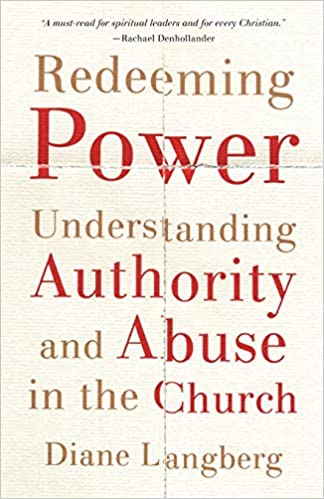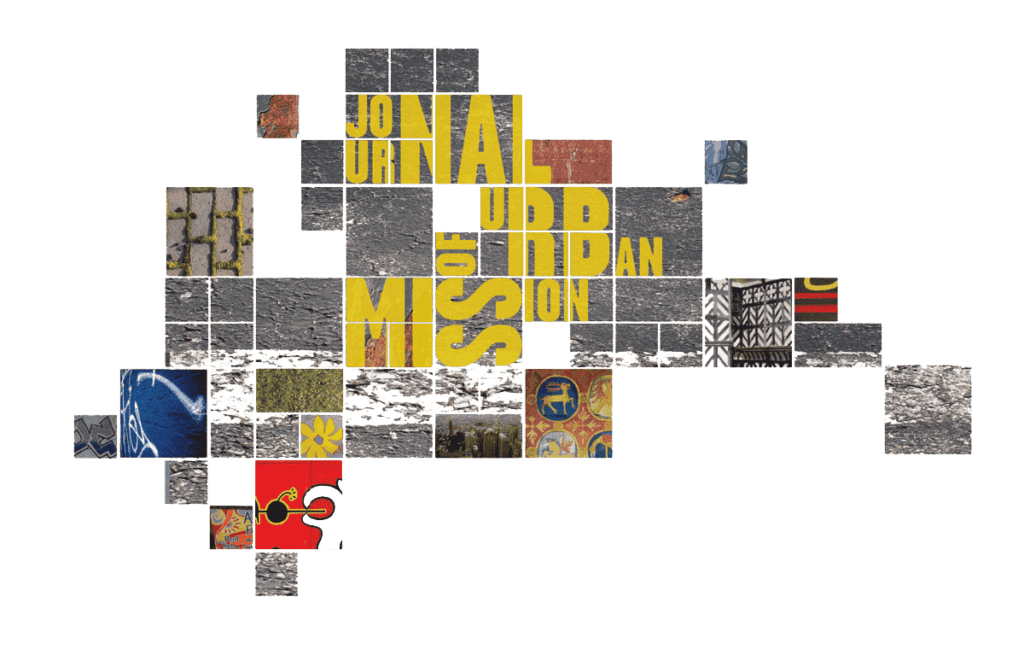Title: Redeeming Power: Understanding Authority and Abuse in the Church
Author: Diane Langberg
Publisher: Grand Rapids, MI: Brazos Press, a division of Baker Publishing Group
Pages: 199 plus end notes
Reviewer: Susan S. Baker
We have been hearing more and more about abuse in all types of settings—families, businesses, children’s groups like the BSA, politicians, celebrities, and unfortunately churches and other ministries. All of these tend to have one thing in common–the relationship between someone in power and someone who is vulnerable. Diane Langberg wrote this book to address this issue as a whole but primarily for the church and other ministries. Langberg also brought a third participant into the conversation—those who are intent on covering up abuse to “protect” an organization. The more I read this book, the more I realized how helpful this could be for anyone, whether in power or vulnerable.
Langberg wrote this book in three parts. The first part, “Power Defined,” had four chapters outlining what power is and how it relates to vulnerability, either as something that builds up or as something that tears down in abuse. Chapter 1, “The Source and Purpose of Power,” begins with Langberg saying, “Power is inherent in being human. Even the most vulnerable among us have power. How we use it or withhold it determines our impact on others.”1 These sentences are foundational for the book. She goes on to explain how overtly using power is not the only way power can be used. Withholding power, not helping people, is just as abusive. Langberg then goes on to look at the Genesis story and the difference between having dominion or being dominating. “Nowhere does he [God] call humans to rule over each other!”2 Her next point is to review the “Power of Personhood.” She notes that we have a voice and the importance of relationship and how misuse and abuse of power can destroy relationships. Langberg finishes this chapter by relating the various types of power humans have: verbal (or silence), emotional, physical, power of personality, power of specialized knowledge, absence, economic, spiritual, and finally our cultures, families, communities, and nations.
“Power is inherent in being human. Even the most vulnerable among us have power. How we use it or withhold it determines our impact on others.”
In Chapter 2, “Vulnerability and Power,” Langberg explores the relationship between these two facets of relationships. She mentions that vulnerability is a gift but it also leaves people open to be wounded.
In Chapter 3, “The Role of Deception in the Use of Power,” Langberg begins by saying, “Deception seems to be a key factor in leading us to use power to take what is not ours and that which will bring death.”3 One means of deception that Christians use is distorting God’s words. An example of this is how Satan twisted God’s words when he tempted Eve. Deceit will often be part truth and part lie. The truth part pulls us in so we can be manipulated. However, if we follow the way of truth, we can bless people rather than tear them down or fool them.
Chapter 4, “The Power of Culture and Influence of Words,” is the last chapter in this section and deals with the idea that we tend to think of our own culture as the right way to do things, so others are inferior. This is arrogance and can deeply wound others. We are currently seeing more and more actual violence against African Americans as well as Asian Americans and Pacific Islanders. We are seeing how states are establishing laws primarily to make it more difficult for the “others” to vote. We have seen the ugliness of white supremacy. All of these very current issues are born from the notion that white Anglo-Saxon Americans should have all the power in this country.
Part 2, “Power Abused,” has six chapters, beginning with Chapter 5, “Understanding Abuse of Power.” In this chapter Langberg goes back over the various types of power mentioned in Chapter 1 and shows how each of these powers can be used to abuse others. She goes through physical power, verbal power, emotional power, powerful combination of knowledge, intellect, and skill, economic power, and power and sex. She then relates a true story of a man who had been subjected to clergy sexual abuse and is now an advocate for others going through this type of ordeal.
Chapter 6, “Power in Human Systems,” deals with the very important aspect of abuse which occurs when systems do not help victims but rather cover up for the sake of the system. We see this within churches when abuse is hidden for the sake of not wanting to hurt the reputation of the church. In this situation, God is often used by saying that revealing the abuse could hurt what God is doing within that church, and now the abused is being abused again. Langberg notes that “disguising the symptoms of the sickly system is no step toward recovery,”4 and goes on to relate that “God is not silent regarding systemic abuse.”5
Chapter 7 is on “Power Between Men and Women.” In this chapter Langberg begins by discussing divorce and looking at divorce as more than just the dissolution of a legal document. It can also be withdrawing from a spouse or watching pornography or battering a wife verbally as well as physically. Women were not created to be dominated by men. As Langberg puts it,
Our starting point in thinking about men and women must be God’s categories. Two humans were created by God, both in his image. He called them to the same work of bearing fruit, ruling, and subduing. They were called to sing a duet to the glory of God. Both humans fell by their own lust. Both followed a lie cloaked in a bit of truth. Both heeded a voice other than God’s. Both received significant consequences from God. None of those consequences were part of God’s original design.6
Langberg goes on to discuss the importance of restoring the proper, meaning God’s, order to the relationship between men and woman.
Churches, as systems, too often do not help victims but rather cover up for the sake of the system. Keeping the abuse secret is justified by saying revealing it could hurt what God is doing. The abused is subjected to abuse all over again, in the name of God.
Chapter 8, “The Intersection of Race and Power,” is extremely meaningful at this time in our country’s history. We must remember that we are all created in God’s image. We cannot discriminate due to artificial means such as skin coloring or country of birth. Langberg indicates that trauma from such discrimination does not end with the individual victim. It goes beyond through “intergenerational transmission of trauma”7 and affects many generations to come. We must begin to see the “other” as us, as we are all “other” when compared to the perfection of God.
Chapter 9, “Power Abused in the Church,” focuses specifically on what we are sorry we must discuss, as the title of the chapter and the book indicate. Abuse in the church is spiritual abuse. Defined by Langberg, “Spiritual abuse involves using the sacred to harm or deceive the soul of another.”8 I have found so many pastors who are put on a pedestal and have no one with whom they can talk and get spiritual counsel for themselves. Pastors seem to take care of everyone else and often do not take care of themselves spiritually. This leaves them open to temptation. Another good case study concluded this chapter.
Chapter 10, the final chapter in this section, is entitled, “Christendom Seduced by Power.” Christendom is seen by Langberg as a system often more interested in power than in embracing those Christ would himself embrace. After noting that Christendom is a human-made system, she explains the various ways in which Christendom is seduced. The author’s final words of this chapter and Part 2 are, “Do not become a counterfeit or duped by one. Follow hard after Christ, not after Christendom, with its allure and promises. Christendom is not Jesus Christ. Seek for him to be the culture in which you live and move and have your being.”9
Christendom is seen by Langberg as a system often more interested in power than in embracing those Christ would himself embrace.
The third part, “Power Redeemed,” includes two chapters and a Postlude. The first chapter, Chapter 11, is entitled “Redemptive Power and the Person of Christ.” It explains the character of Christ as it is found in human hearts. We are reminded that Jesus is love and Jesus is light and we must emulate that.
Chapter 12, “Healing Power and the Body of Christ,” begins by reminding us of the story of Zaccheus in the Bible and how Jesus’ love turned this tax collector, this abuser of so many, into a restorer as he paid back what he had stolen and also gave to the poor. Langberg said, “Jesus used power not to rule but to influence, to invite, to welcome, and to transform.”10 She then lays out the correct way to look at power—the power of humility and the power of love. She reminds us that when we use power to divide and abuse, we are not following Christ’s example.
Finally, the Postlude indicates lessons Langberg learned from Cambodia and Bulgaria. These stories, along with the case studies in the previous chapters, give real life practical understanding of all the good points she makes. We all have power and at times we tend to want to use that for ourselves, but the transforming love of Christ in us allows us to see others as more important than ourselves and use our power to encourage and build up others.
As mentioned in the introduction to this review, this book should be a must read for all those in ministry, especially pastors. It would also be helpful for all Christians interested in growing to be more Christ-like in their relationships.
Notes
1 Diane Langberg, Redeeming Power: Understanding Authority and Abuse in the Church (Grand Rapids, MI: Brazos Press, 2020), 3.
2 Ibid., 5.
3 Ibid., 29.
4 Ibid., 84.
5 Ibid., 85.
6 Ibid., 99.
7 Ibid., 113.
8 Ibid., 127.
9 Ibid., 158.
10 Ibid., 177.


